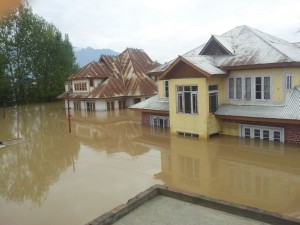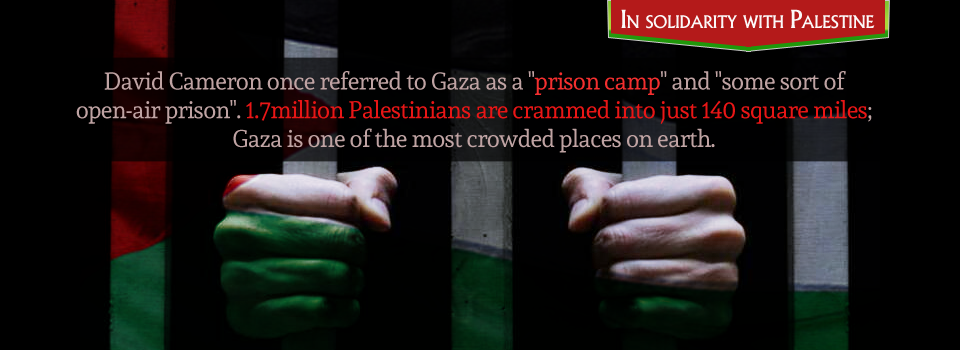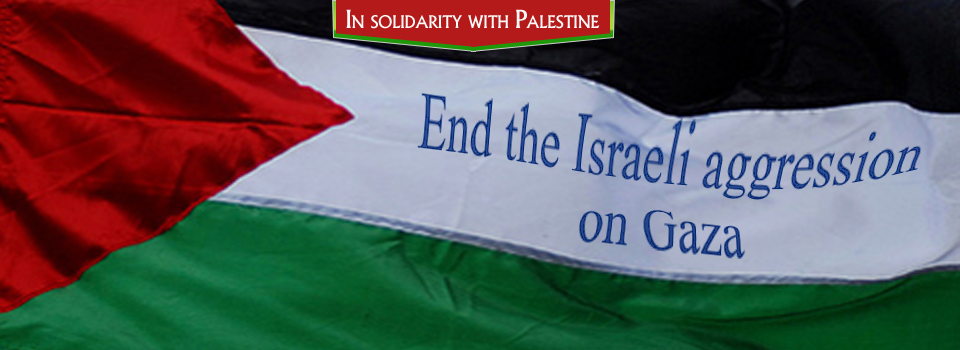The series (so far ) contains:
(continued from Islamic History series…)
The Prophet (at Medina)
In the previous post we looked briefly at (part 1) Arabia before Islam, (part 2) the Prophet(s.a.w.) at Mecca, until Hijrah (or the migration). In this part we will look at the life of Prophet(s.a.w.) after Hijrah.

Brotherhood:
The migrants (muhajireen) and the locals (ansaar) were bound together in brotherhood whereby making the migrants feel welcome at Medina and helping them settle down.
Treaty with jews:
At Medina there were the jews and the pagans before arrival of Islam. The Jews at Medina were of 3 tribal groups – Banu Nadir, Banu Quraiza, Banu Qainuqa.
During the first year after Hijrah, a treaty was signed between the Prophet(s.a.w.) as the head of the state, and the Jews. According to this treaty, the Jews had equal right to citizenship and complete religious freedom.
However, the Jews and the hypocrites together tried to sabotage the Muslim work and this has been frequently mentioned in the Quran.
Change in Qibla:
The change in Qibla from Jerusalem to Kaaba came next.
Expeditions against the Quraish:
The Prophet(s.a.w.) as the head of the state had to deal with the Quraish who kept plotting against the Prophet. Several expeditions were led against them. In these expeditions only the Muhajireen participated.
Battle of Badr.
A rumor had spread that Abu Sufyan’s caravan was attacked (from Syria). The Quraish dispatched an army under Abu Jahl to invade Medina. When the attack from Quraish was led, the Prophet(s.a.w.) decided to capture Abu Sufyan’ caravan on its way to Mecca. The Muslims marched towards Badr ( a few miles from Medina) near water of Badr.
Abu Sufyan turned back, and the Muslims met the army of Quraish at Badr.
The Muslims were very less in number compared to the Quraish – 313 Muslims versus 1000 Quraishites.
Shaiba, Utba and Walid from Quraish fought against Obaida, Hamza and Ali from the Muslims.
The Muslim victory came with about 70 Quraish killed and about the same number taken as prisoners. Abu Jahl was killed in this battle.
14 Muslims men were martyred in this battle – 6 being from the Muhajir and 8 from the Ansaar.
It was in the same year that Fatimah (the daughter of the Prophet s.a.w.) was married to Ali.
Battle of Uhud:
The Quraish thirsty for revenge, took help of the tribes of Kinana and Tihama. An army of 3000 soldiers under Abu Sufyan marched towards Medina.
The Muslims waited at Uhud (near Medina) with a force of 1000 men. Abdullah bin Ubbay (Munafiq) withdrew his forces (about 200 men).
50 archers were appointed at th pass of the hill.
Ali, Hamza and Abu Dajnah fought very bravely. Khalid Bin Walid (still a pagan) came and turned the Quraishite defeat into victory.
A rumour spread that the Prophet(s.a.w.) was killed. Umar on hearing this threw away his sword saying it was no use to fight now. The Muslims surrounded the Prophet to protect him were Abu Bakr, Talha, Zubair, Ziyad, Umm Amara. The Meccans brutalized the dead and the wounded e.g. Hamza.
Banu Kalb:
In 626 A.D, the chieftain of Banu Kalb requested the Prophet(s.a.w) to send some Muslims to his tribe. The Prophet (s.a.w.) dispatched 70 men, but all of them were killed at the well of Mauna. Khubaib (one of the Muslims) was captured and sold to the Quraish where he was publicly tortured to death.
The Jewish conspiracy:
Ka’b bin Ashraf, a jewish chief and renowned poet, even planned the Prophet’s (s.a.w.) assasination.
Banu Nadir refused to renew the charter of alliance and secretly planned for a show down. Muslims beseiged their fort and after 11 days, Banu Nadir surrendered. They were allowed to take all their movables except for arms and weapons with them.
Battle of Khandaq:
In 627 A.D. (the 5th year of Hijrah), the Meccansudner the command of Abu Sufyan attacked Medina. Various tribes (e.g. Ghatafan) joined the Quraish and an army of 10,000 men attacked Medina.
Muslims only 3000 in number under the advice of Salman Al-Farsi dug a trench around Medina and guarded it. Quraish stayed for a few weeks surrounding Medina. However a fierce wind blew and the Quraish had to leave leaving Ghatafan behind. So Ghatafan people also fled finally.
Banu Quraiza:
According to the treaty Banu Quraiza was supposed to support the Muslims when attacked by outsiders. However, during the battle of Khandaq they stayed back. They even conspired against the Muslims and tried to attack the fortress where the Muslim women and children were kept during the battle of Khandaq.
After the seige of about 1 month, Banu Quraiza had to surrender unconditionally. Sa’d ibn Muadh was the arbitrator and brought to judge as to what needs to be done, and the decision was taken based on that.
Treaty of Hudaibiyyah:
In 628A.D. (6th Hijrah), March, the Prophet and his companions set towards the Kaaba to do Umrah (1400 men). An ambassador was sent to the Quraish to allow the Muslims to enter.First messenger to Quraish was ill-treated and his camel hamstrung. Finally Uthman was sent to Mecca to negotiate on behalf of the Muslims.
During this time news came that Uthman had been killed, and it was then that the Prophet took oath from his companions that they would stay by him.
This pledge is known as Bayit al Ridwan.
Finally a treaty was signed with the Quraish for a period of 10 years. This is known as the treaty of Hudaibiyyah.
These 10 years gave tranquility and stability from Quraishite attacks. People all over were invited to Islam including Heracleus (Byzantine Emperor), Khosroe Pervaiz (Persian head), Negus (Abyssinian monarch) and the chiefs of Egypt, Yamama and Syria.
Battle of Khyber (629 A.D.):
Banu Nadir and Banu Quraiza had settled at a place called Khyber. The Jews sought help of Ghatafan tribe and decided to attack the Muslims.
In 7 days all the fortresses of the jews were captured by the Muslims. The Prophet(s.a.w.) granted them safe-conduct. Their lands and estates were restored to them. In return they had to pay 1/2 of the produce of their lands.
March 629 A.D. Umrah:
Prophet (s.a.w.) and 2000 men proceeded for Umrah (3 days) and then retreated back to Medina.
Battle of Muta'(630 A.D.):
Byzantinian emperor sent forces against the Muslims at the border of Syria. Muslims (3000 men) under the command of Zaid Ibn Haritha were sent. Zaid was killed, and the command was taken over by Ja’afar bin Talib and after him by Khalid bin Walid. The Muslims gained victory.
Opening of Mecca (630 A.D.):
Banu Khu’daa (ally of Muslims) attacked Banu Bakr (allies of Quraish). The Prophet (s.a.w.) sent emissary with 3 options to the Quraish:
– payment of indemnity to Banu’ Khudaa’
– or breaking alliance with Banu Bakr
– or abrogation of treaty of Hudaibiyyah
Abu Sufyan was reluctant. So Muslims marched 10,000 men on 10th Ramadan and camped at a short distance from Mecca. Abu Sufyan tried to negotiate now for renewal of treaty of Hudaibiyyah. Now it was too late.
The Prophet led the Muslims towards Kaaba. A general amnesty was declared. The Prophet (s.a.w.) entered Kaaba and declared that all idols be broken. This was the great victory that was gained without shedding any blood.
Battle of Hunain:
Tribes of Thaqif and Hawazin joine to attack the Muslims. The Prophet (s.a.w.) led an army of 12,000 men against them. Battle was at Hunain which is a deep ravine near Mecca.The enemy was routed. Banu Thaqif sought refuge in Taif, but Taif was also beseiged.
Prophet(s.a.w.) appointed governer at Mecca and returned to Medina.
Tabuk Expedition:
Roman Emperor Heraculeus wanted to fight Muslims for the indecisive battle at Muta’. So he gathered a huge force.
The Prophet (s.a.w.) collected a force of 30,000 volunteers with 10,000 horsemen. An appeal for public donations was made to support the war expenses. Ali was left incharge of Medina and Muslims awaited the enemy at Tabuk (midway between Medina and Damascus). The Muslims returned after 24 hours.
Year of Deputations(9Hj):
Large number of deputations came to Medina(among them were people of Taif). Ali captured the tribe of Tay. The Prophet (s.a.w.) set the captives free. As a result the whole tribe of Tay including their leader ‘Adi bin Hatim accepted Islam.
End of the eyar, non-muslims were prohibited from entering Mecca (during the Hajj led by AbuBakr where Ali read the declaration).
Farewell pilgrimage:
Last Hajj of the Prophet s.a.w. (10Hj). The Prophet set out from Medina on 23Feb 632AD
Prophet(s.a.w)’s illness and death:
This led to utter confusion and sadness. Abu Bakr took control of the situation and led the Muslims in following the method of the Prophet (s.a.w.).







2 thoughts on “Islamic History – 3”
Comments are closed.